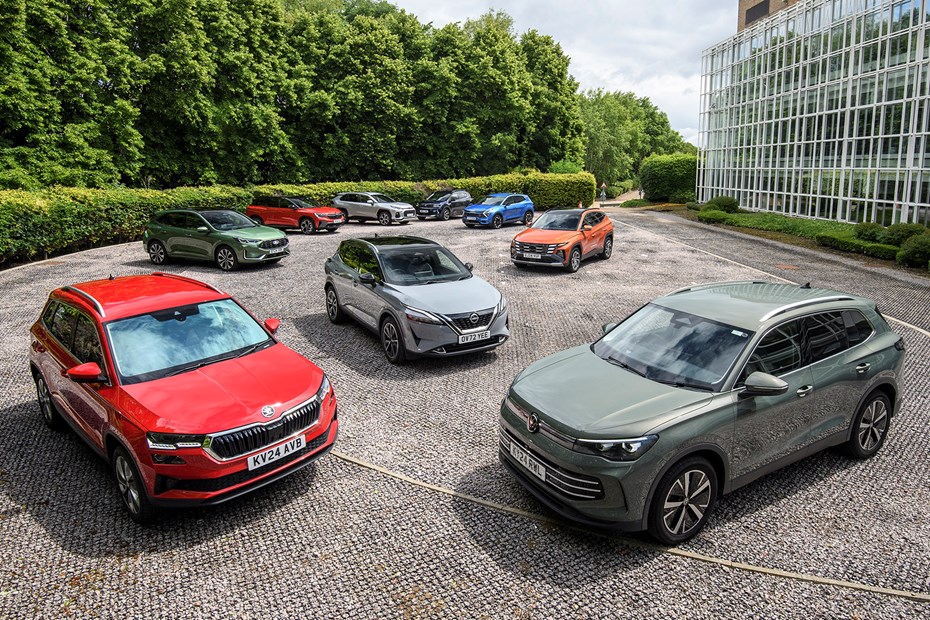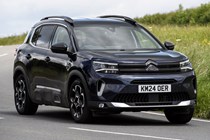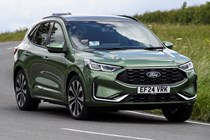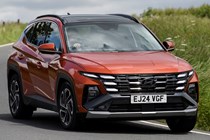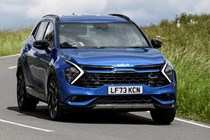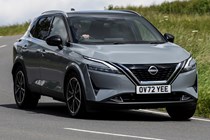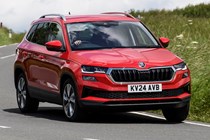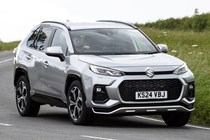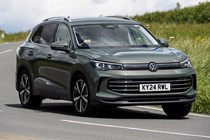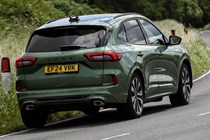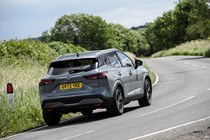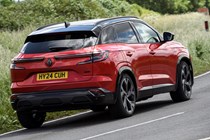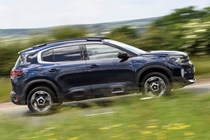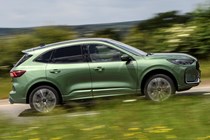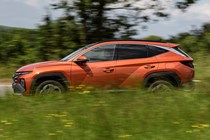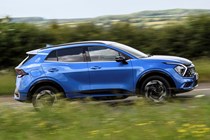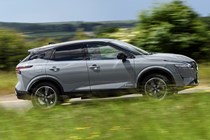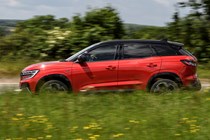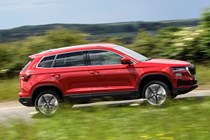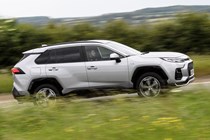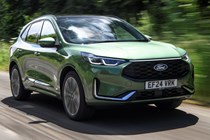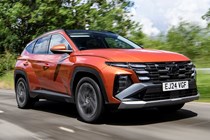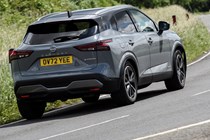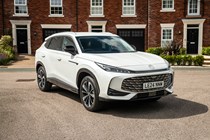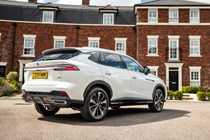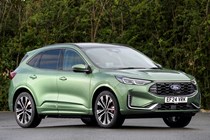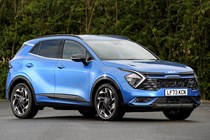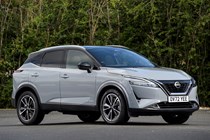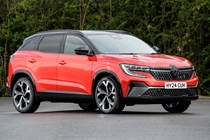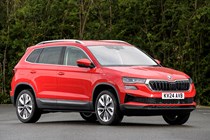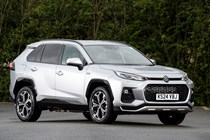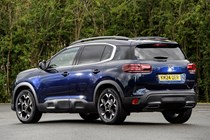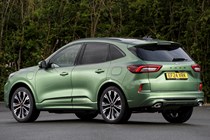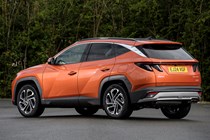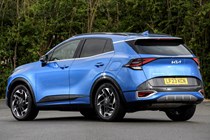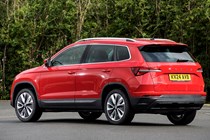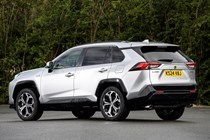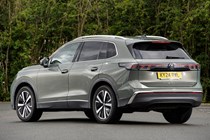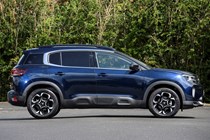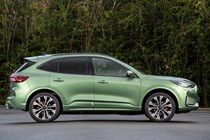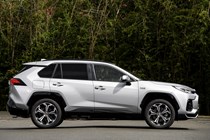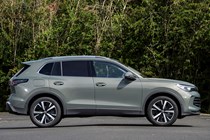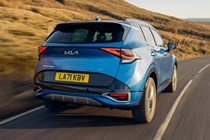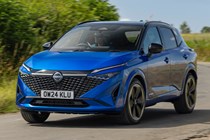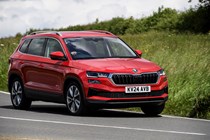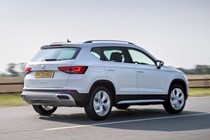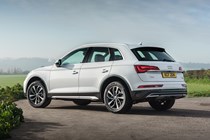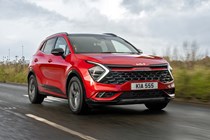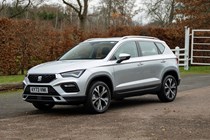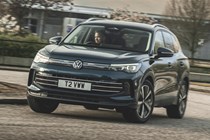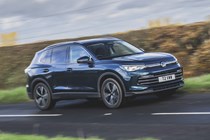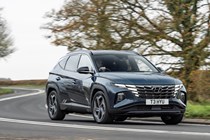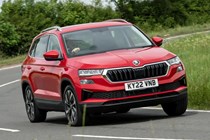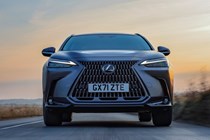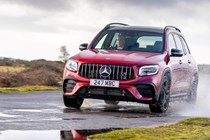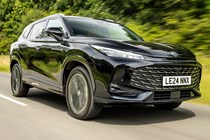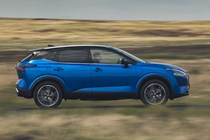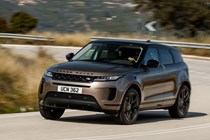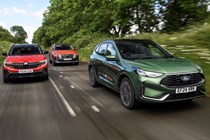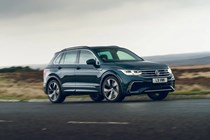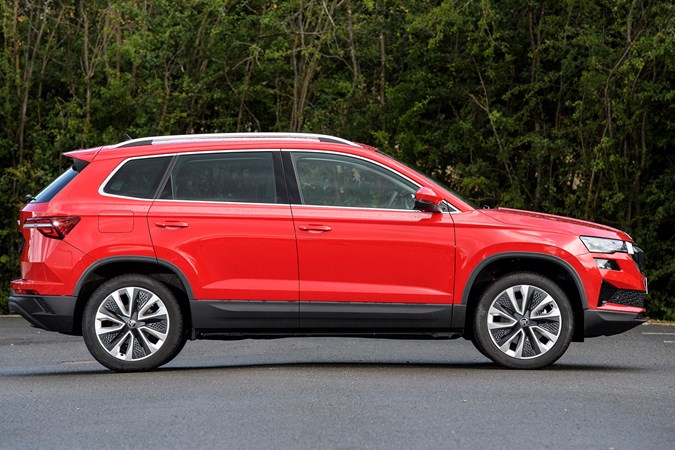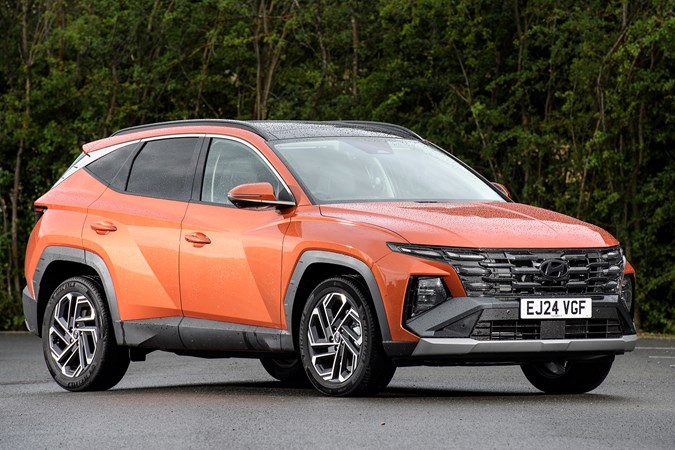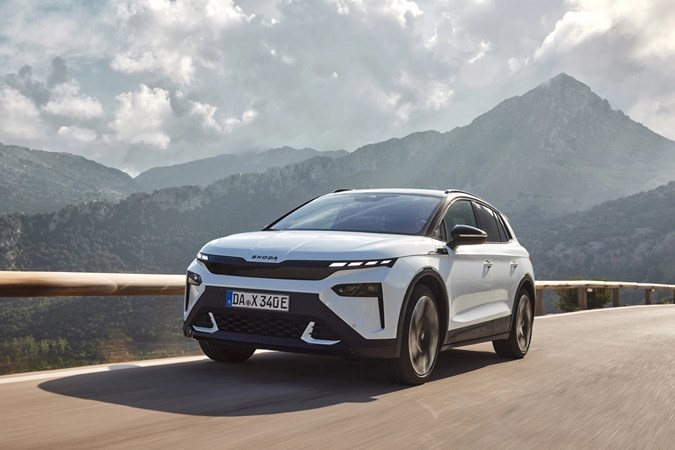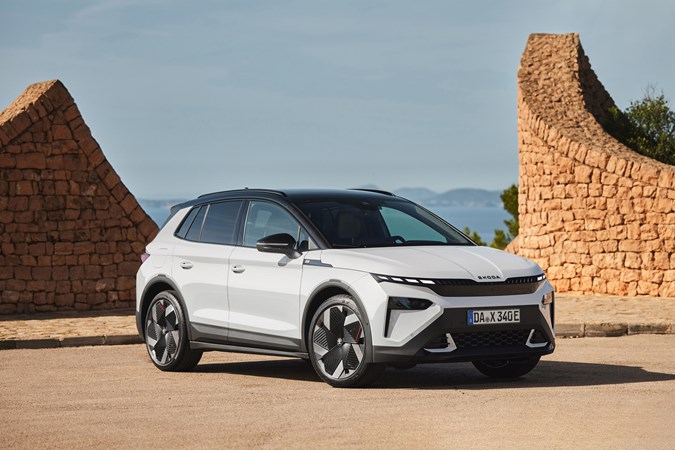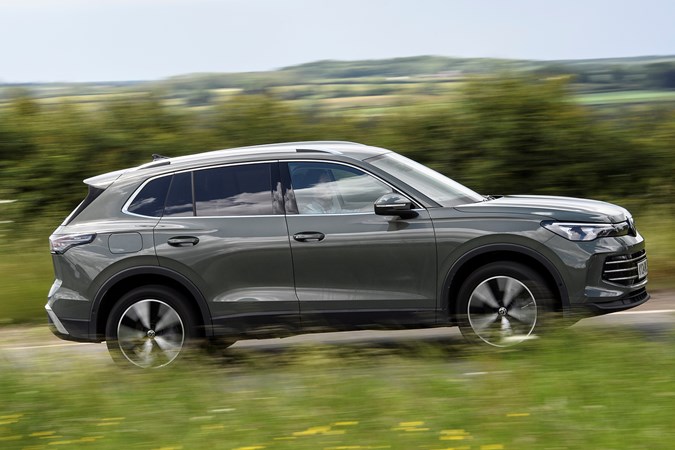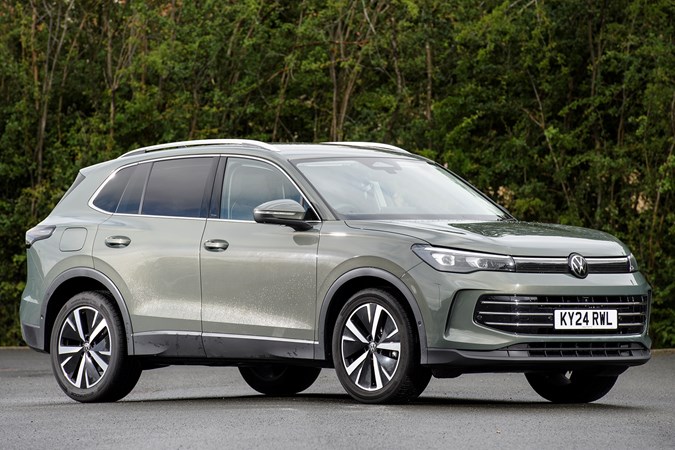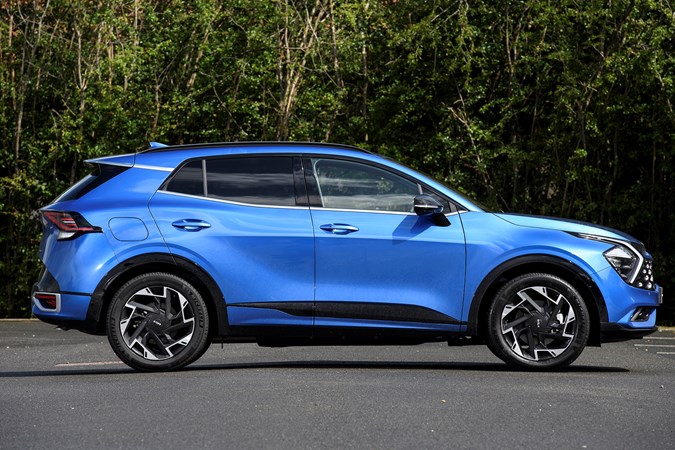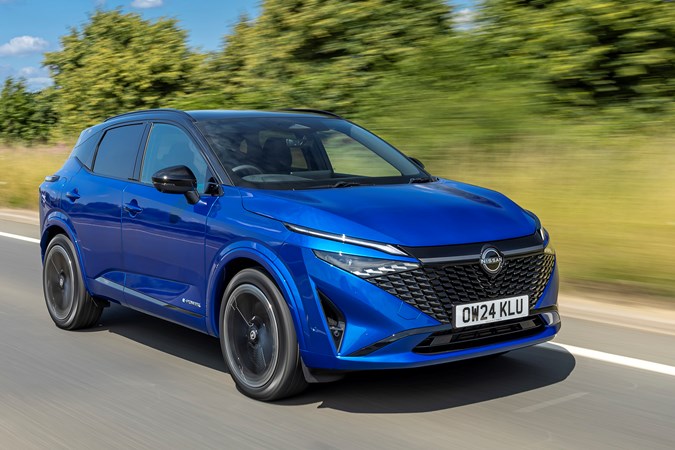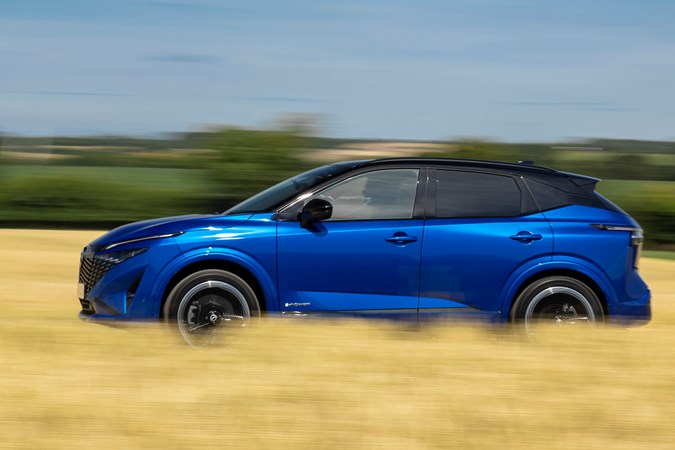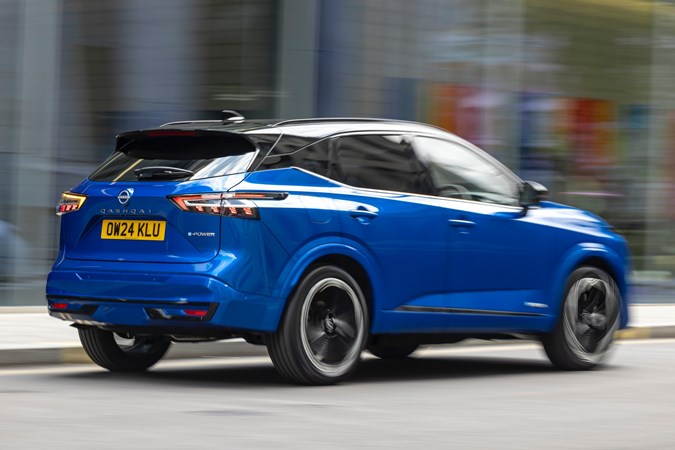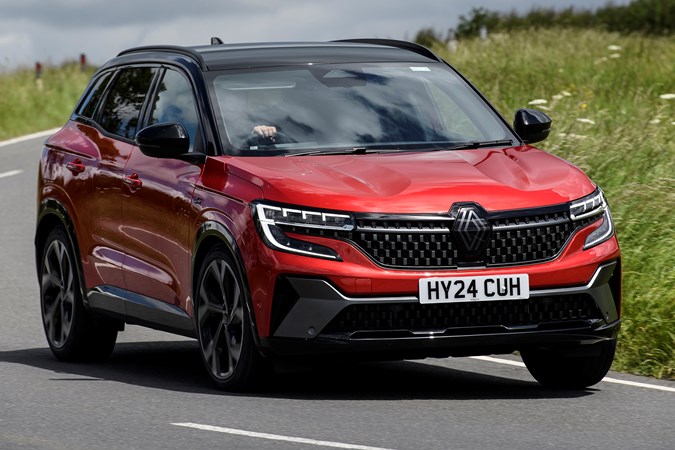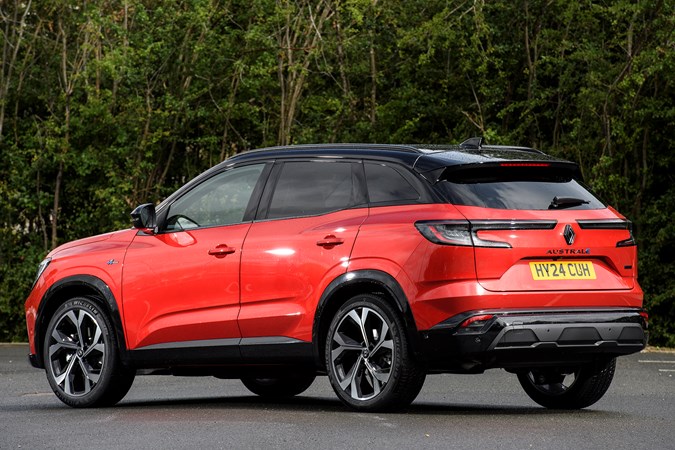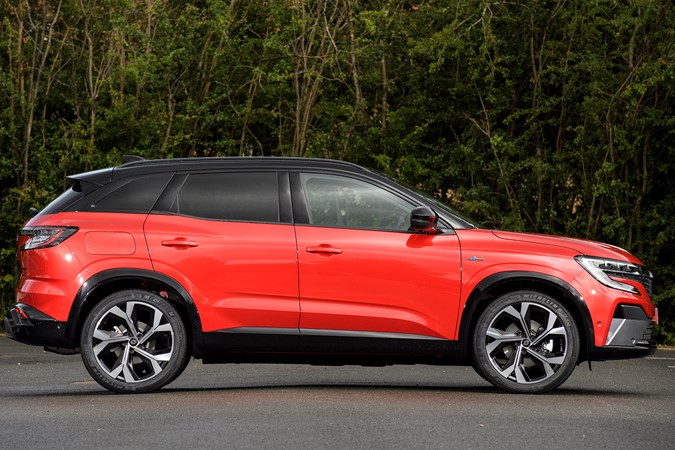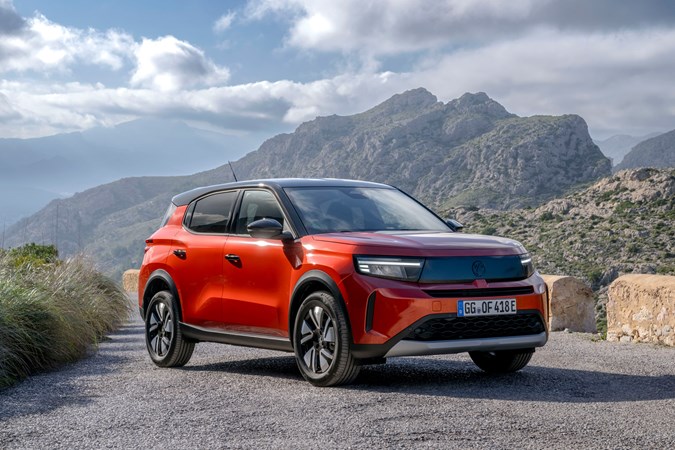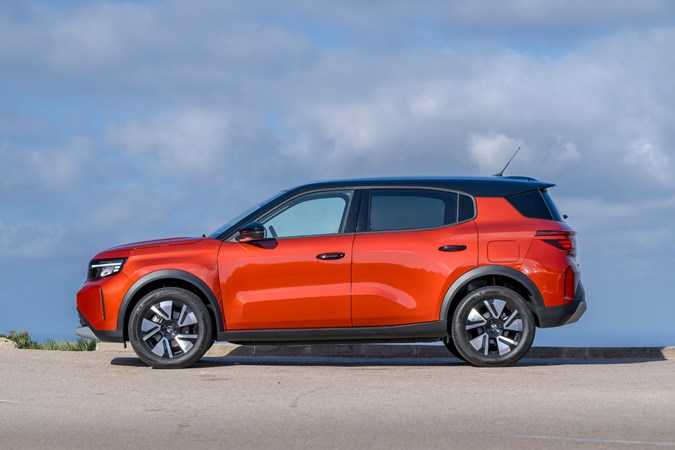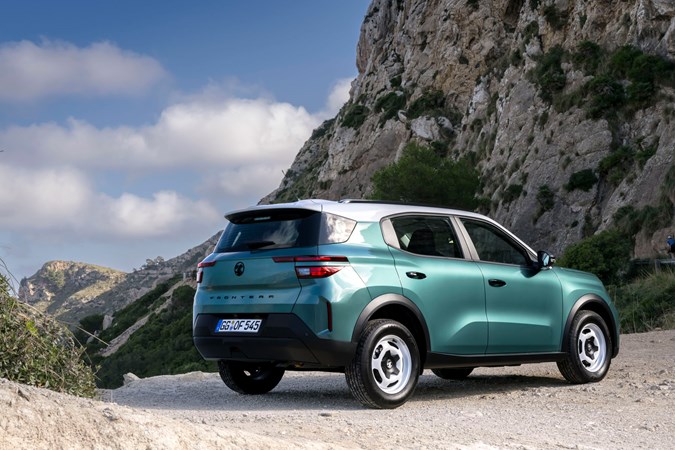Sports Utility Vehicles (better known as SUVs) have exploded in popularity. Eight of the Top 10 best-selling cars in the UK in 2024 were SUVs – and, in response to this intense demand, most car makers have now ditched their traditional hatchback, MPVs, estates and saloon models in favour of an SUV-led line-up.
That means there’s a vast array of SUVs to choose from. But, with so many choices, it’’s hard to work out the best option for you and your family. That’s where Parkers comes in. We’ve tested every new family SUV on the market to sort the wheat from the chaff – and we’ve picked our experts’ brains to compile this top 10 list of family SUVs to help you walk into your next purchase feeling informed.
But why bother with a family SUV at all? SUVs of this sort serve the same function as a large hatchback (such as the Ford Focus or Skoda Octavia). They offer seating for five, they’re powered by a range of efficient engines, and they have boots that are large enough to swallow all the equipment needed to sustain your children.

While most of the SUVs on this list don’t do much more than a traditional family hatchback, such as a Volkswagen Golf, they offer a more commanding driving position, greater visibility and arguably a little extra practicality, as you don’t need to double over to load children and luggage into them. Lots are even available with four-wheel drive, so you’re less likely to get stranded in harsh British winters.
Scroll down to read our list of the best family SUVs on sale today in order of preference. We’ve tested them all and think each one shines brightly enough to be included here – and we’ve deliberately avoided any luxury options to give you a list of attainable contenders. If you’d like to learn more about how our team of road testers arrived at the opinions expressed here, check out our page on how we test cars.
If none of the options below are quite right for you, don’t forget we have plenty of other SUV and family car guides, including the best electric SUVs and perfect plug-in hybrids for those looking for a greener option.
The best family SUVs on sale in 2025
Parkers double award winner, including Car of The Year
Medium Family Car of The Year
Parkers Car of The Year 2025
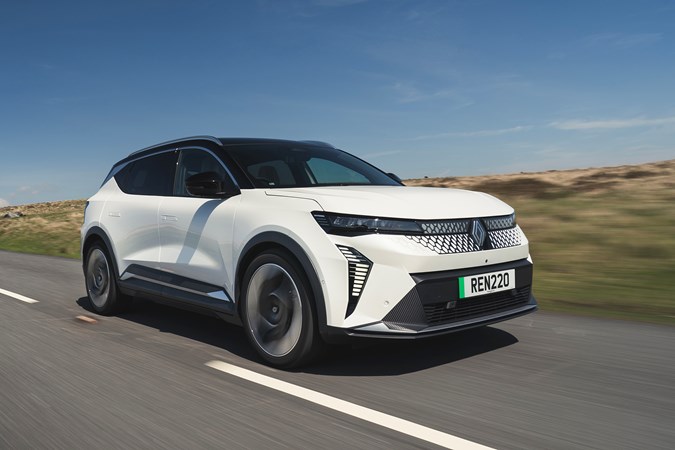


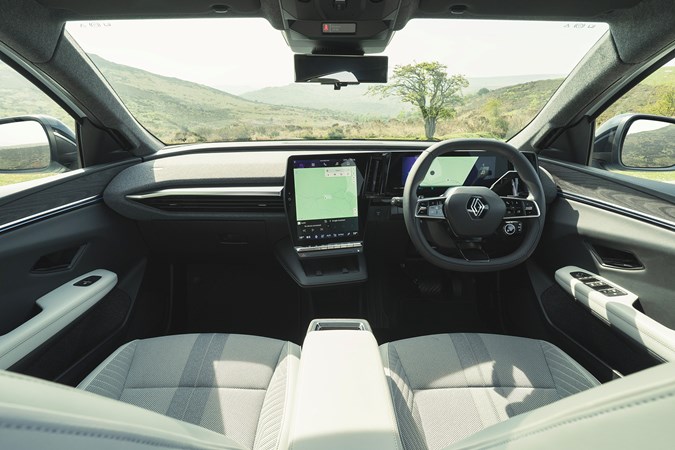
The interior has been designed with family written all over it. For a start, there is acres of room inside, with all passengers spoilt for space. Legroom is plentiful, even for adults, and it's a bright and airy space to sit too, especially with the optional panoramic sunroof. Add in rear-mounted phone holders and USB-C charging ports dotted throughout the car and the Scenic couldn't be more family-friendly.
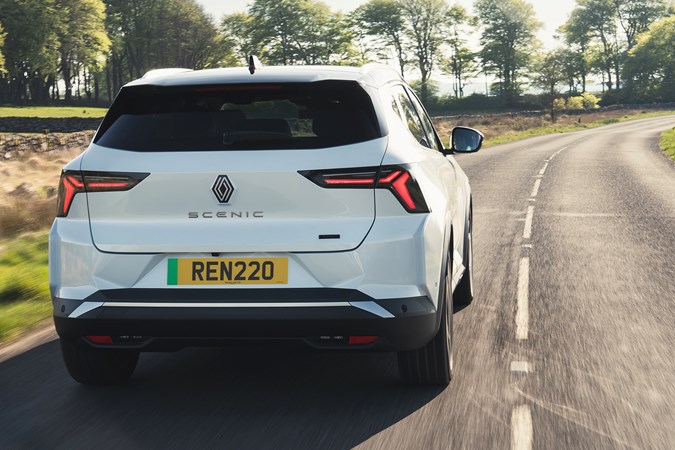
The Scenic offers a solid driving experience thanks to a relatively low kerbweight for an EV. While it leans heavily into comfort, it still offers agility and a fairly satisfying steering feel. We'd plug for the larger 87kWh battery model for the real-world 300 miles of range it offers. With Renault's award-winning financing too, the big battery option is only a couple of quid more a month too.
It's such a good car that nitpicking really is required to be critical. Those sleek retracting door handles are a faff to get used to, and rear visibility is rubbish. Outright performance is also fairly restrained against some other electric rivals, but you'd never call the Scenic slow.
To find out more, read our full Renault Scenic E-Tech review
Pros
- Easy and enjoyable to drive
- Superb real-world driving range
- Spacious, well-planned interior
Cons
- Poor rear visibility
- Ride can get fidgety at times
The best traditional all-round family SUV. End of discussion
You can’t have it with a hybrid powertrain, which is somewhat of a faux pas these days. However, the Karoq’s 1.5-litre petrol engine comes with a clever cylinder deactivation system that makes it almost as efficient as its mild hybrid rivals in the real world. Our testers can easily achieve more than 45mpg without really trying – and it has 150hp, so it’s not short of performance. If you want a petrol or diesel family SUV, test drive a Karoq before viewing anything else.
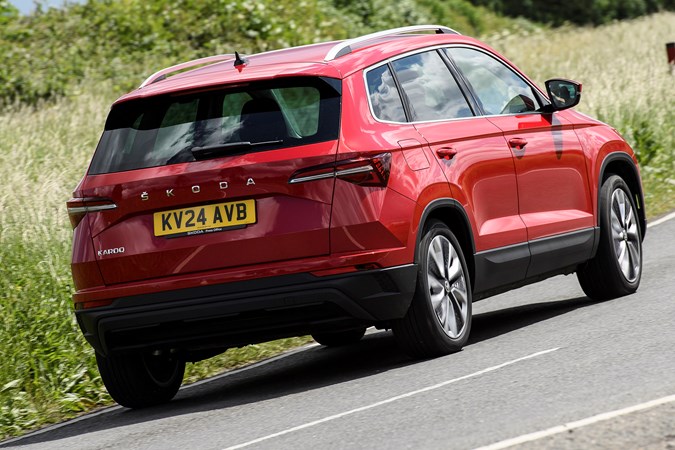
We love how Skoda has packaged the Karoq, too. It’s huge inside. It’s also brimming with intelligent features, such as Skoda’s Varioflex rear bench. This can be tumbled forwards or removed completely to liberate some extra boot space.
If we had to be critical, the Karoq is starting to show its age now, with its infotainment system falling behind the competition now. It uses the Volkswagen Group’s previous-generation screen and software, which is eons behind the system fitted to the latest Tiguan. It works fine, it just doesn’t look or feel as crisp. But, considering how well-resolved the rest of the car is, we reckon that’s a small price to pay.
To find out more, read our full Skoda Karoq review
Pros
- Comfortable ride
- Flexible rear seats
- Spacious interior
Cons
- No hybrid option available
- 1.0-litre engine feels slow
It’s spacious and that styling makes a bold statement
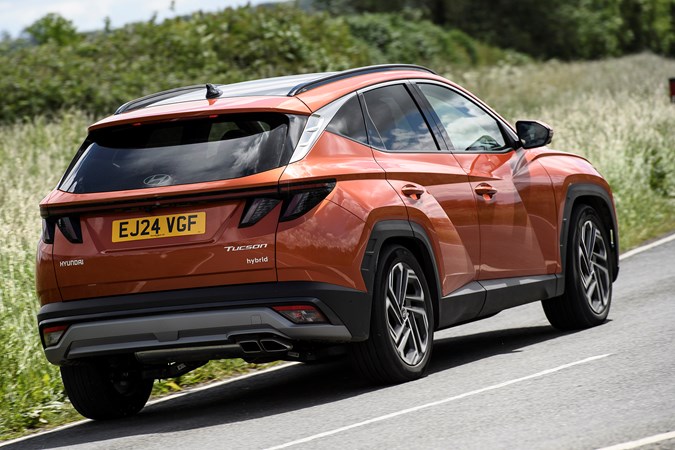
Its 1.6-litre petrol engine isn’t anything to write home about but, thanks to an astute hybrid system, the Tucson at no point feels sluggish, despite its enormous size. The full nuclear family of hybrid systems are on offer, including plug-in, full and mild.
The PHEV and full hybrid systems will happily pootle about in EV mode for most of the time around town, helping to keep your MPG figures down and the whole experience rather civilised. What’s more, the Tucson is also very competitively priced, with lower monthly finances costs than the Tiguan, the Sportage and the Austral.
To find out more, read our full Hyundai Tucson review
Pros
- Spacious inside
- Comfortable on the road
- Competitively priced
Cons
- Interior lacks character
- Only one petrol engine available
Practical, comfortable and for a great price
Skoda is renowned for making excellent family cars, and the Elroq is no exception. It's slightly larger in size than the Karoq, and offers plenty of rear-seat space especially, making it ideal for those that regularly carry taller teenagers or adults in the back. It's quite a wide car by class standards, and those dimensions go into making a wide and spacious interior. Perhaps the only downside with the Elroq is that it's not quite as versatile as the petrol Karoq, as it doesn't get that car's sliding rear seats, which can also tumble forward to allow for a completely flat floor.

The Elroq is available with three battery sizes – 52kWh, 59kWh and 77kWh – with maximum claimed ranges of between 232 and 360 miles, along with various power outputs. A sportier all-wheel-drive vRS model is also expected to be introduced in the near future for those wanting something a bit faster. That said, the current Elroq is still good to drive, arguably better than the Renault Scenic, though we still need to test it on UK roads. It's also competitiely priced, with leasing deals that are already competitive against rivals.
To find out more, read our full Skoda Elroq review
Pros
- Generous rear-seat space
- Excellent to drive
- Well-priced
Cons
- Not as practical as Skoda's petrol Karoq
- Desirable options are expensive
The best family SUV if you like super-sized tech and a great driving experience
Now, space was hardly something the previous Tiguan struggled with but, thanks to an increase in dimensions, it’s now got more boot and rear passenger room than almost any car in its class. The interior is a particular highlight, with Volkswagen really lifting things up a notch in terms of general design and quality. The huge touchscreen works well, although some might find the sheer number of features it handles a bit daunting.
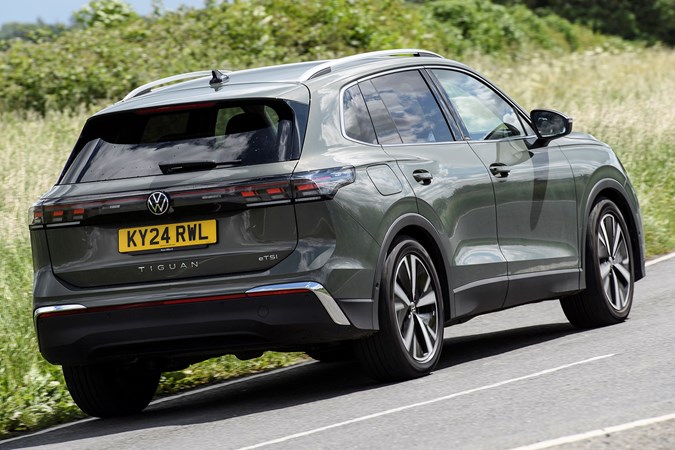
If choice is key on your family SUV, you won’t find anything better than a Volkswagen Tiguan. It’s now one of the few cars in its class available with petrol, diesel and plug-in hybrids, each being some of the best powertrains you’ll find in a car of this type. The plug-in hybrids are particularly noteworthy as they’re new and can travel up to a claimed 77 miles on electric power – again, the most of any car in this class – and particularly appealing from a company car perspective.
There are only two small downsides about the Tiguan. The first is that the ride on the standard suspension isn’t all that comfortable, especially on big wheels. Second is the cost, as the Tiguan’s high starting price puts it close to many more premium rivals.
To find out more, read our full Volkswagen Tiguan review
Pros
- Hugely spacious
- Great choice of engines
- Upmarket interior
Cons
- Expensive starting price
- Ride quality could be better
A no-nonsense family SUV with a cracking warranty
The best leasing deal we could find for the Tucson was around £60 per month cheaper than the best offer on the Sportage – and that sort of saving soon adds up over the course of a three-year finance package. And while the Sportage’s boot is a respectable size at 591 litres, the Tucson bumps that figure up to 620 litres, which means it’s a little more useful as a family runabout – especially if you need to carry a pushchair.
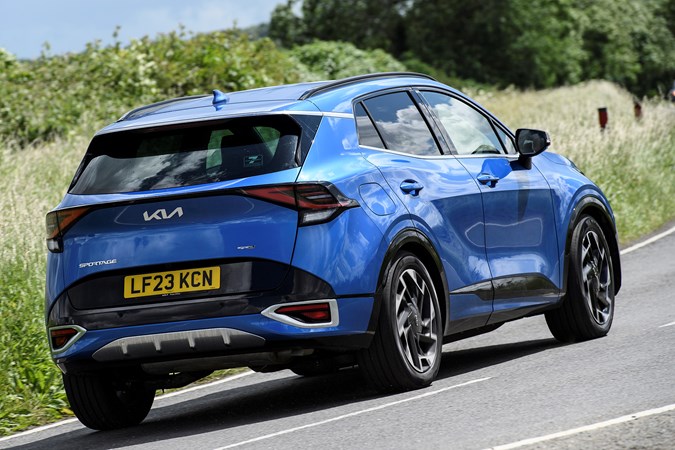
That being said, the Sportage has its own set of strengths. It comes with a far more attractive seven-year warranty, compared to the five-year package you get on the Tucson. Interior quality has vastly improved over previous versions of the Sportage, too, especially in terms of infotainment technology. But the Tucson feels that little bit better built – and it shares the same touchscreen and gauge cluster. An updated Sportage is on the way later in 2025, however.
The Sportage’s trump card is that it's available with a broad range of powertrains that includes a conventional petrol, a self-charging hybrid and a plug-in hybrid option – along with the choice of either front or four-wheel drive. That means you should be able to find a model that suits you within the range, which is something you can’t say for most of the cars on this list. Opt for either of the Sportage’s hybrid powertrains, though, and you’ll sacrifice more boot space to their batteries.
To find out more, read our full Kia Sportage review
Pros
- Smart, well-equipped cabin
- Excellent infotainment system
- Spacious seating arrangement
Cons
- More expensive to lease than most rivals
- Plug-in model is expensive
Excellent value, especially in E-Power guise
More than four million Qashqais have rolled off the production line since the Mk1 model was launched in 2007, and the company’s marketing team now claims – rather eerily – that you’re never more than a few hundred metres away from one. But how does the latest version stack up?
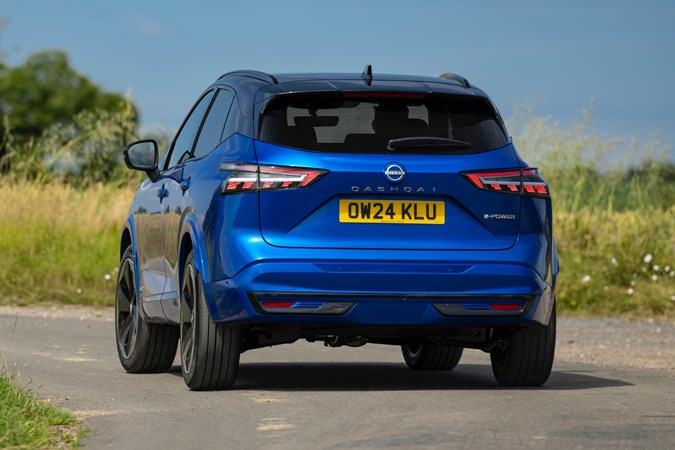
Well, it’s mightily refined and comfortable inside. The cabin has more flare than the Tucson or the Tiguan, while the new parking assistance systems are a game changer. They include a new invisible hood mode that will ‘remove’ the body of the car from your display camera feed when parking, to ensure you have a clear view of where your rims are at all times.
The new Qashqai is available with a mild-hybrid power unit or Nissan’s E-Power system. The latter has a unique setup in that the engine works essentially as a generator to power the electric motor and charge the battery, with no direct power to the wheels at all. On the road, it feels closer to an EV than any of the other hybrids on this list, but the ICE unit will still kick in with just a slight nudge on the accelerator. Best of all with the Qashqai, though, is the price. It’s one of the cheapest on this list to finance, generally costing as little as £190 per month.
To find out more, read our full Nissan Qashqai review
Pros
- Fantastic value
- Refined cabin
- Efficient power unit
Cons
- Lacks poke compared with rivals
- Not very original
Simple model range, loads of tech, brilliant hybrid
But if you have a young family with kids in car seats, you’ll easily find a happy middle ground that allows a good balance of luggage capacity and second row space. What’s impressive is how you can get all that interior space despite the Austral’s hybrid powertrain. It’s a self-charging setup rather than a plug-in but, during our long-term test of the Austral, we got remarkably close to Renault’s promised 60mpg with very little effort.

The Austral’s infotainment system is powered by Google and works wonderfully – you can link your Google account to it or connect to Android Auto with lightning speed. It’s the most seamless incarnation of this tech I’ve encountered, with a crisp and bright display that is as easy on the eye as it is to read.
Our biggest criticism is that Renault has been a little stingy with its rear-wheel steering system. It hacks more than a metre off the Austral’s turning circle at low speeds, which is a brilliant feature for those high-pressure U-turns or parallel parks during the school run. However, it’s only available on the top-spec model. That’s a real shame.
To find out more, read our full Renault Austral review
Pros
- Stylish image is tough for any rival to beat
- Luxurious interior is high-tech and refined
- Good to drive, with impressive balance of comfort and performance
Cons
- The small boot may not be practical for some families
- Four-wheel steer on top spec car only
MG HS
Staggering value for money – especially in PHEV guise
MG has now introduced a new, second-generation version of its HS, which is a significant step forward in many areas, yet importantly is hardly any more expensive. It’s quite an impressive achievement, and a sign of just how much this Chinese-British car firm has improved in recent years.

All engines are new to the HS, including a turbocharged 1.5-litre petrol engine as the base option, as well as a brilliant plug-in hybrid that delivers a claimed 75 miles from a charge. The PHEV is much better to drive over the standard petrol engine, which isn’t the most refined or efficient, and is hardly any more expensive than many non-hybrid rivals. In some cases, it’s even cheaper. Now better to drive, more spacious and still as generously equipped, the HS is more than deserving of a second look.
While there are a few small rough edges to the HS, these are easy to forgive considering how much you’ll save by opting for it, at least if you're buying outright. The leasing costs aren't actually much cheaper than most others on this list.
To find out more, read our full MG HS review
Pros
- Brilliant value for money
- Spacious interior
- Excellent electric range from plug-in hybrid
Cons
- Slow automatic gearbox
- Inefficient petrol engine
Tremendous value and even available with seven seats
The Frontera was Vauxhall's family SUV of the late 1990s and early 2000s, and the name has now been revived for the firm's new value-packed family SUV. It replaces the flawed Crossland and sits between the Mokka and Grandland in terms of size, though is cheaper than both of them to buy.
You can choose the Frontera as both a mild-hybrid petrol or an electric car, and the important thing to note is that both of these versions cost the same – and it's the first model to achieve genuine price parity between petrol and electric. Starting from £23,495, the Frontera undercuts many electric city cars for price, and is tremendous value for money to buy both outright and to lease.
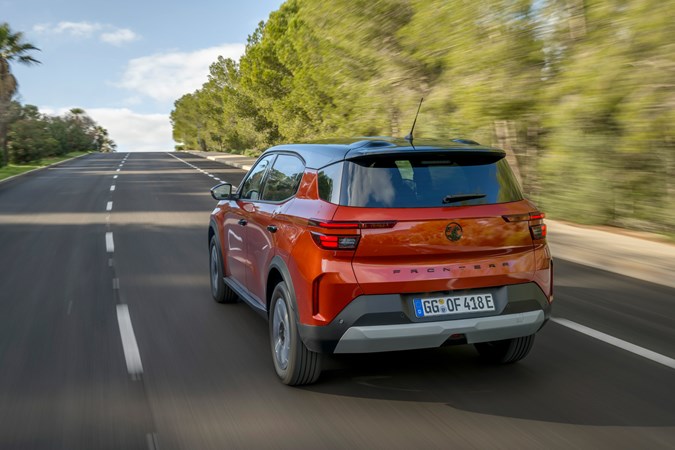
Though the claimed 186-mile range electric range isn't all that much, we don't think it's bad for the price – and Vauxhall will introduce a 250-mile Long Range model later in 2025. The mild-hybrid is available with 100hp or 136hp, though isn't very refined and isn't particularly economical, so we think the EV is best.
The Frontera is nothing special to drive but is very comfortable, and we think that's more important for a family car. It's also a very spacious interior for the price, with its boxy shape meaning it has plenty of rear-seat room and a good-size boot. Hybrid versions are also available with seven seats as a £1,000 option, but though we haven't been able to test them yet, suspect they will be quite cramped.
To find out more, read our full Vauxhall Frontera review
Pros
- Great value for money
- Spacious interior
- Comfortable
Cons
- Hybrid isn't all that good to drive
- Interior feels quite cheap
FAQs
What does SUV stand for?
SUV is an initialism for ‘Sports Utility Vehicle.’ Generally, these vehicles share the same level of practicality as a family hatchback, but they sit higher, have loftier driving positions and they’re styled to look like rugged off-roaders. Some are also available with four-wheel drive, so they’re not entirely useless if you need to take them off-road.
Why buy a family SUV?
The best family SUVs make light work of hauling around your children, pets and all the accessories that come with them. Of course, hatchbacks and estates can achieve the same thing, but SUVs have gained popularity because they make people feel safer and because of how they look.
You sit higher, so you can see more of the road – and their usually chunky styling seems tougher. Plus, if you specify yours with four-wheel drive, you get more grip on the road and the ability to tackle some rough stuff if required.
Their taller styling also makes them a little more practical for family life, as it means loading children into car seats is less back-breaking. Just remember the boot level is also higher as a result, which could make loading luggage more difficult for you.
Aren’t SUVs bad for the planet?
When SUVs found their initial wave of mainstream popularity in the 1990s, they were. They were heavy, they were powered by inefficient engines, and they were often fitted with four-wheel drive which, naturally, increased emissions.
But modern SUVs are far cleaner. The cars’ popularity and the intense competition in the market have forced manufacturers to become more eco-friendly. Now, most SUVs are available with at least a mild hybrid powertrain – and car makers are increasingly moving towards using sustainable and recycled materials for their construction.
Car makers aren’t miracle workers, though. Because SUVs are inherently heavier and less aerodynamic than an equivalent hatchback or estate, they will burn more fuel. If you’re worried about fuel costs, we’d recommend checking out the cars on our best hatchbacks page instead.
Alternatively, if you’re concerned about protecting the environment, there are plenty of electric SUVs on sale – all of which don’t emit any CO2 as they drive.
Should I consider any other family SUVs?
There are far too many SUVs on sale for us to list them here. Almost every car maker has a broad range of SUV sizes and types in their model ranges, including massive seven-seat SUVs for those with large families and slinkier coupe-SUVs designed to appeal to those with sporting aspirations.
We’ve intentionally restricted this list to affordable, non-premium SUVs, simply because their hard-wearing interiors and relatively compact dimensions are better suited to family life. However, there are lots of luxurious SUVs on sale that we covet, including the BMW X3 and the Range Rover Sport.
They’re all brilliant cars in their own right – but be warned. They have far nicer (and much more detailed) interiors, so you’ll need to set aside a healthy cleaning budget for when your kids inevitably smear chocolate into their upholstery.
The MINI Countryman is perhaps the worst culprit. It has heavily textured fabric door cards that are a nightmare to clean without a spot cleaner. The Kia Sportage, meanwhile, can be mucked out with a vacuum cleaner and some interior wipes.
* These deals are indicative examples of some packages available as of 17 January 2025, but are subject to change without prior notice. Everyone’s financial circumstances are different and the availability of credit is subject to status. Terms, conditions and exclusions apply. Parkers cannot recommend a deal for you specifically.
Just so you know, we may receive a commission or other compensation from the links on this website - read why you should trust us.


